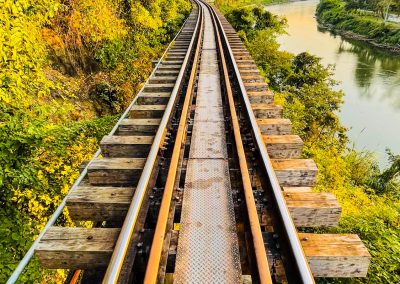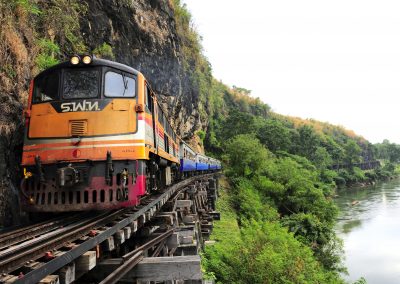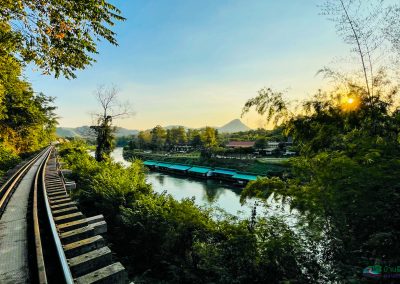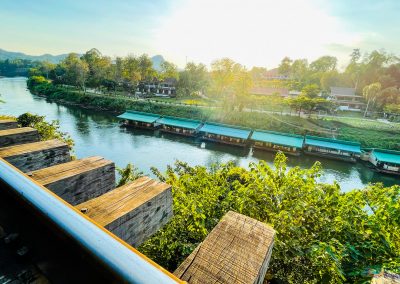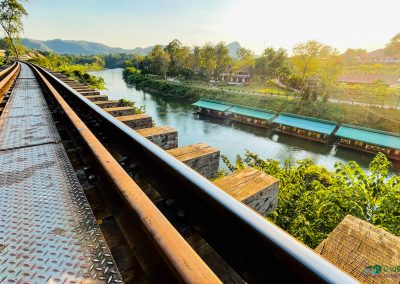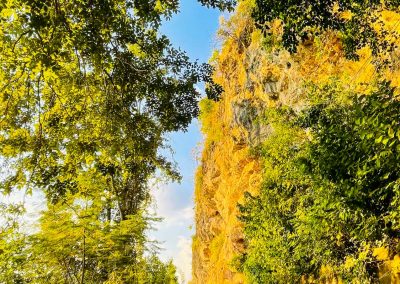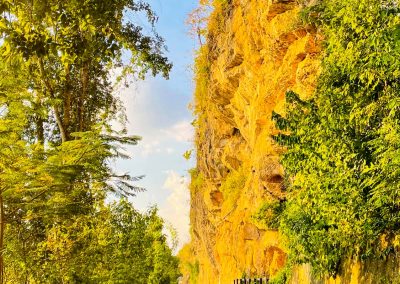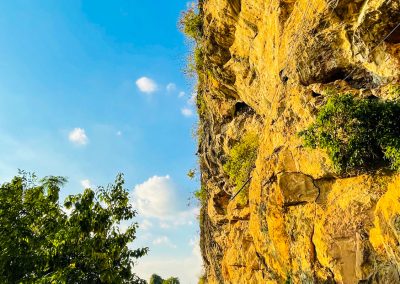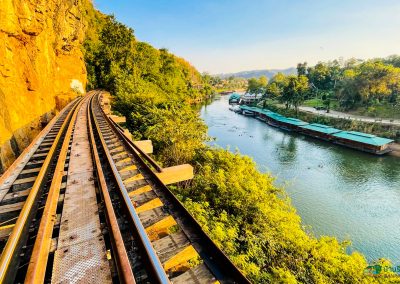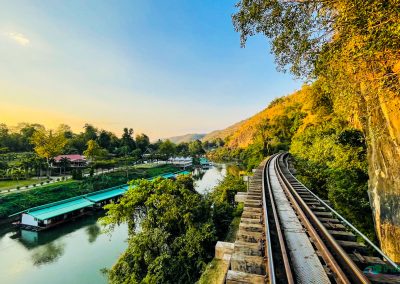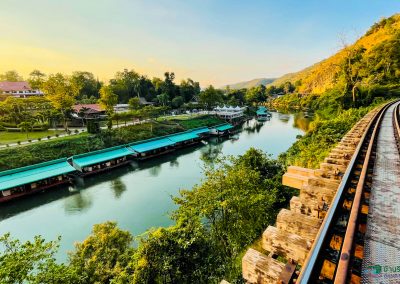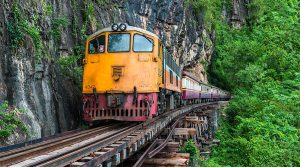 As a result of the agreement on September 6, 1942, Japan conscripted prisoners of war. Including conscripted laborers which were forcibly brought from Indonesia, Singapore, and Malaya, which Japan seized, into Thailand To build a railway from Thailand to Burma. The southern railway line will be separated. At Nong Pla Duk Station Ban Pong District Ratchaburi Province Passing through Kanchanaburi Crossing the Kwai Yai River Then along the Kwai Noi River Pass to the west of the Three Pagodas Pass. Entering the Thai-Myanmar border combined with railroad Coming from the city of Mawlamyine Until the destination in Thanbi Uzayat, Burma, a total distance of 415 kilometers.
As a result of the agreement on September 6, 1942, Japan conscripted prisoners of war. Including conscripted laborers which were forcibly brought from Indonesia, Singapore, and Malaya, which Japan seized, into Thailand To build a railway from Thailand to Burma. The southern railway line will be separated. At Nong Pla Duk Station Ban Pong District Ratchaburi Province Passing through Kanchanaburi Crossing the Kwai Yai River Then along the Kwai Noi River Pass to the west of the Three Pagodas Pass. Entering the Thai-Myanmar border combined with railroad Coming from the city of Mawlamyine Until the destination in Thanbi Uzayat, Burma, a total distance of 415 kilometers.
Japan has started construction of this deadly railway. Since October 1942 and completed on October 23, 1943, total construction time was 1 year. This route was a labor of effort. Pioneering work by prisoners of war Consisting of approximately 100,000 workers, guests, Burmese, Malaysian, Indonesian, Thai, and prisoners of war from various nations, building the road was extremely difficult. Because I have to cross the chasm. The place was very dry and deserted. The urgency of building a road food shortage and medicine, along with interference from Allied bombs made prisoners of war who built the railroad Many had to die. It is estimated that there were approximately 21,399 prisoners of war from the British, Australian, New Zealand, Dutch, and laborers of various nations who were buried in the Ban Don Rak cemetery. and Khao Chong Kai Cemetery After the war ended with Japan being the defeated party to the Allied Powers on August 15, 1945

When the war ended, the Thai government asked to purchase this route from the United Nations. It is worth approximately 50 million baht and the border area has been dismantled. Only Ban Tha Sao remains. which has become a "waterfall station" at present, with a distance of approximately 77 kilometers remaining, this railway line Passing by scenery along the way which is very beautiful Especially around Tham Krasae. The train route winds its way through the cliffs. Along the Kwai Noi River State Railway of Thailand Open for travel on this route every day. and arrange a special train on the Bangkok-Namtok line every Saturday, Sunday, and public holidays. Contact for details at State Railway of Thailand

